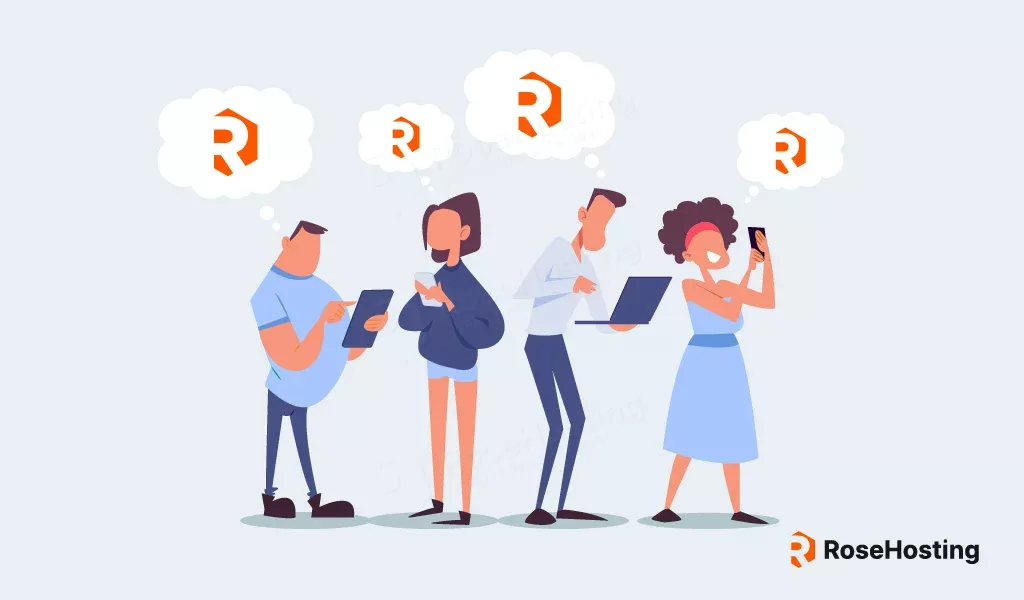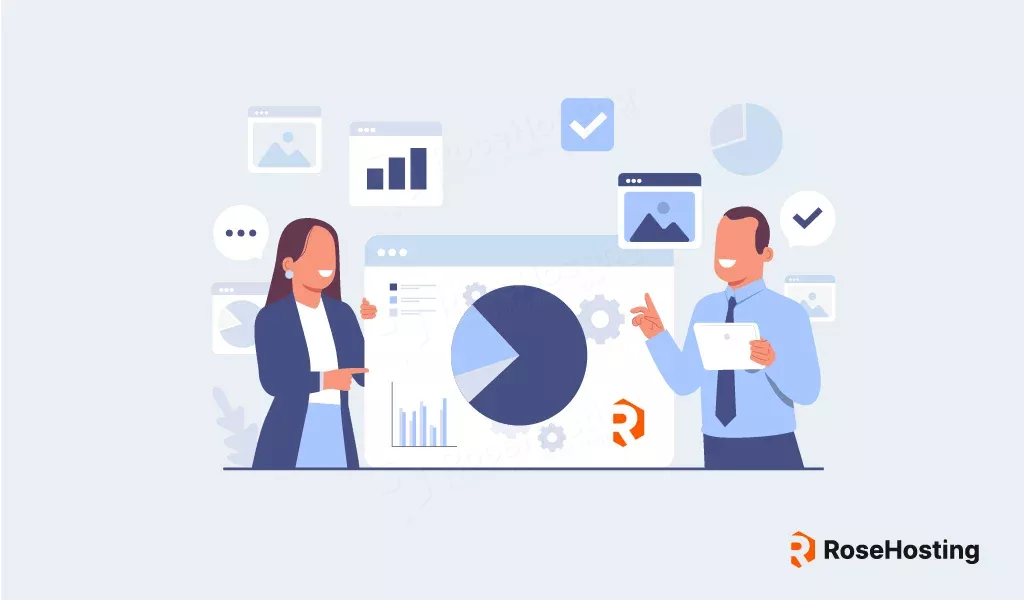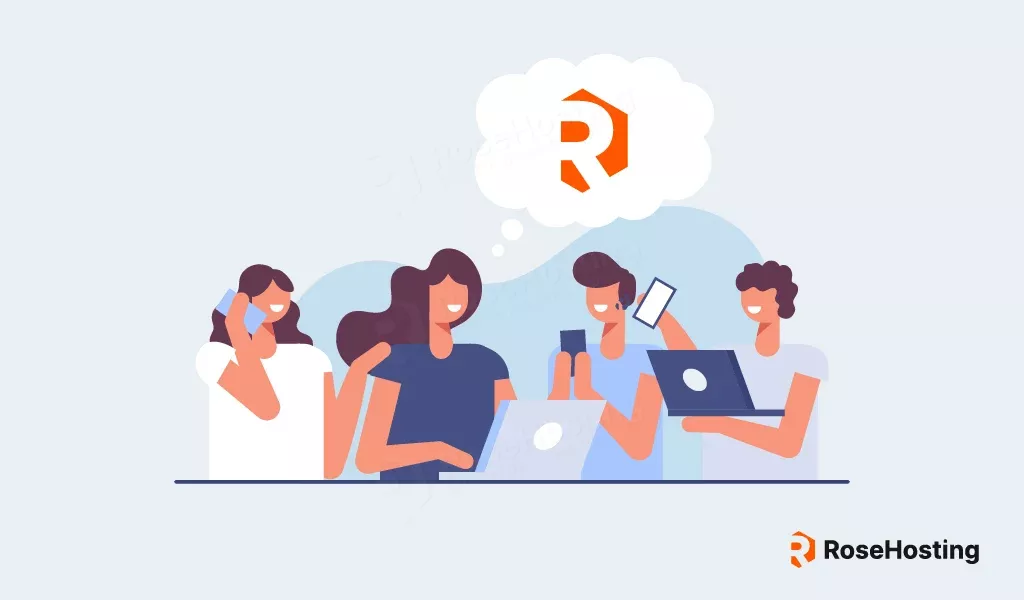
To stay competitive and get people to read your blog, there’s lots you can do. We’re here to tell you the best ways to get people on your blog.
Having a blog brings you closer to audiences and potential customers, allowing you to distinguish yourself from your competitors. You can even earn additional income. If nothing else, you have another avenue to attain your business website goals that’s totally within your control.
Writing a blog can be incredibly effective, but you need to invest significant time and effort into getting it noticed. This, of course, has made blogging and creating written content in general so competitive and difficult to excel in.
Table of Contents
Attract the right audience
Something people don’t mention about expanding your readership is that getting people to read your blog is only the beginning. Any website with a big enough budget can easily promote its blog and get a few clicks. While this might seem like an effective strategy, it can get quite expensive and isn’t sustainable in the long run.
To get your blog noticed, define your target audience and dedicate your efforts to making content that appeals to them.
After creating a detailed profile of your readers, learn as much as you can about your target audience. Leverage the right tools and stay in touch with the people who read your blog.
Leveraging the right tools
Having the right tools allows you to get more information about your target audience. You can develop a deeper understanding of what their motivations are and what they want to see more of.
Website analytic tools such as Matomo and Google Analytics help track important metrics such as website visits and conversions. This is a great way to determine which pages drive the most traffic to your website. Knowing your top-performing pages informs your decisions on the content your audience likes and what you should write about.
You can also leverage SEO tools such as Ahrefs and Google Search Console to see understand your audience search terms. Looking at the terms they’re searching for and understanding their intent helps you plan your content strategy. It makes it easy to address their pain points and write content they will find engaging. Ironically, the clicks and interaction you get in turn, will help you rank higher in search engines.
Stay in touch with your readers
The information on your target audience doesn’t have to be limited to data you get from tools and other software. In fact, it’s absolutely crucial for you to get feedback and ask readers’ questions yourself. Interact with your audience and encourage them to comment on your content or share their thoughts. This helps you understand what their commonalities and how to feed that back into content people can’t help but click. This, in turn, helps improve your SEO rankings and grow your audience even more.
Discovering your intended readership with data-backed strategies is key to getting more people to read your blog. This is a pivotal step to growing your visibility online.
Develop a more distinct brand voice
A distinct brand is a core element of your blog. You won’t be the only friendly, sarcastic, or sassy blog online. There will always be competitors with a similar voice to yours. This may prompt your readers to ask why they should read yours when there are plenty of blogs like it.
To refine your voice, study your competitors and think about what they are and aren’t doing. If you notice that they’re not making data-backed content or are too stiff in tone, use it to your advantage. Counteract by referencing more data or adopting a flexible tone. This simple change can help you stand out and become more discernible to your intended audience.
Of course, the changes you make should be sensible and still appeal to your readers. When developing your brand tone, focus on what your blog does best. Then look at ways to improve and amplify it.
A distinct brand voice helps your blog get noticed and gives you an edge over your competitors.
Address pain points and meet expectations
A key takeaway is that the content you create should address your audience’s pain points and meet their expectations. The value of a blog is measured by how it impacts readers and if it delivers on its promise. You don’t just want to chase clicks and rankings but rather earn visitor loyalty. This will ultimately help you convert as many of them into clients or customers and repeat visits.
If you’re discussing a problem and teaching your audience how to fix it, explain what caused it. List ways to resolve the issue at hand, and give tips on how they can avoid encountering the same problem.
On the other hand, if you’re making a step-by-step guide, you might want to discuss certain terminologies and concepts. Keep your instructions simple for your readers.
Finally, if you’re sharing a story, be descriptive and give your audience the whole picture. By allowing them to immerse themselves in the piece fully, you give them an opportunity to start liking your brand.
Ticking the right boxes, sharing insights, and giving all the relevant details allow you to create a holistic reading experience.
To take it a step further, list these pain points and expectations and incorporate them into your content strategy. This makes it easier for you to schedule and prioritize topics, interlink content, and tailor your blog for your audiences.
Keeping this in mind and being consistent with producing quality content will help you gain the loyalty of your audience. By fostering loyalty, you will establish yourself as an expert in your industry and get people to read your blog.
Strengthen your SEO strategy

When it comes to running your blog, having an SEO strategy is almost as important as having great content. No matter what kind of content you create, your visibility determines your reach. Visibility is heavily influenced by whether or not you adhere to SEO best practices and appeal to search engines.
Search engine optimization or SEO can be divided into three categories: on-page SEO, off-page SEO, and technical SEO. On-page and off-page SEO are typically the easiest for website owners to address.
On-page SEO
As the name implies, on-page is primarily concerned with making improvements to your actual on-page content. Ensure the page contains the right keywords. Include those keywords in your headings and sprinkle them throughout your article. Link your content to other pages you have on your site, and make everything easy to read and navigate. In a nutshell, make everything on the page easy to consume.
These optimizations make your content more likely to rank high when someone searches for that keyword. Naturally, these keywords should be relevant to your business to get your blog noticed by the right people.
Off-page SEO
On the other hand, off-page SEO refers to strategies that you have to do outside of your website. An off-page SEO campaign includes getting backlinks and maintaining a healthy link profile. Ultimately expanding your presence outside of your own blog and social media channels.
To refine your off-page SEO strategy, create linkable assets, find interview opportunities, and work on guest posting. Being featured in all the right articles and being mentioned by relevant websites is difficult but highly effective. One of the key factors in improving your website’s credibility and ranking is increasing your domain authority. While many associate domain authority with search engine rankings, it’s actually a third-party metric that serves as an estimate of a site’s overall strength.
By focusing on building high-quality, relevant backlinks, you not only improve your domain authority but also send strong trust signals to search engines, making your content more likely to rank higher and reach the right audience.
Technical SEO
Lastly, technical SEO pertains to the most complex aspects of search engine optimization. It is primarily concerned with maintaining a great user experience for your readers and increasing load speed.
To address such concerns, you have to perform several crucial tasks. Making your website easier for search engines to crawl and index is an obvious one. If bots cannot scan your content, they cannot index it. However, maintaining fast load speed and improving your website’s responsiveness and overall UI is key in determining ranking positions. These are admittedly very technically demanding responsibilities, and that’s why you should have a website maintenance checklist. Ideally, you should look for the support of seasoned experts who can take some of the weight off your shoulders. This can be internal staff or external tech support.
Promote on the right channels
Not narrowing down what channels to promote your content is incredibly wasteful and ineffective. You throw money at inefficient campaigns or waste your energy making posts that get little to no engagement. Both are not sustainable ways to run a business.
Understanding which social channels, forums, and communities your audience is on allows pinpoint targeting. You can dedicate your resources more effectively, getting results faster without costly decisions that negatively impact your budget and ROI.
To find which platforms your target audience uses, remember that different websites and social media platforms appeal to different demographics.
Social media platforms
Social media channels like Instagram appeal to younger audiences. On the other hand, platforms like LinkedIn might be more used by people in an older age demographic. Bear this in mind when targeting specific segments with any campaign.
If you’re selling a product or a service, you might be better off promoting on one channel alone. Case in point, B2B businesses tend to find more success on platforms like LinkedIn. Meanwhile, B2C businesses might thrive more on Facebook and Pinterest. A clear understanding of what you offer and who you appeal to will help you pick the appropriate promotion platforms.
Get website referrals
In addition to promoting your content on social media, a powerful tactic is to focus on finding smaller niche websites. These smaller sites typically have audiences that are compatible or even the same as your existing readers. Create targeted content that appeals to these users and contact the website owners to build partnerships and relevant links.
Traffic from referrals like this not only decreases your reliance on Google but typically converts significantly better. This is a positive side-effect of the audience that clicks through being your ideal customers. If they click through, they are the right audience, actively looking for what you offer. If your link and message piqued their interest, chances of conversion are significantly higher.
Develop your brand tone of voice
Once you settle on a channel, remember that every post, interaction, and engagement should keep your brand voice in mind. Writing your blog in a formal tone while being sassy and informal in social media posts doesn’t work. This makes it difficult to have a consistent presence online and confuses your audience about who you really are. For effective branding, it’s best to create posts that align with your brand voice.
Additionally, maximize the performance of your carefully crafted posts by picking the right time to publish them. Study your chosen platform and research insight into when your posts can get the most views and engagement. Proper scheduling can help you break through the noise and get your blog posts noticed.
Lastly, be sure to interact with your target audience online. A simple reply to a comment or query answer can help increase engagement for your blog and earn reader loyalty.
Participate in collaborations
You should also remember that not every blog or website out there is your competition. A great method to get people to read your blog is by collaborating with non-competitors who share a similar audience.
For example, people with travel blogs might want to partner with those who own shopping blogs. Simply create content like ‘Best Shoes for Traveling’ or ‘Finding the Right Shoes for Every Destination’ for the other website. Add your link to a relevant page back to your blog, and it’ll benefit you both. The right partnership can help both blogs get noticed by more people.
Of course, sharing a target audience shouldn’t be the sole factor to take in when accepting a collaboration. You should also look into your potential partner’s domain rating and traffic and see how they’re performing SEO-wise. Doing so helps you choose the right collaborations or whether you should be collaborating at all.
Properly vetting collaboration opportunities and working with the right people helps efficiently grow your blog online.
Keep in touch with your readers
If you do start to experience growth, it’s important for you not to lose sight of the readers you already have. Before you shrug this off, remember that growth can overwhelm even the most composed people, and not knowing what to do with your increased visibility can cause you to lose touch with your audience.
You might become too focused on creating more content that you end up having no more time to interact with your readers or respond to their comments. Sometimes, this can even result in you no longer giving each piece the same level of attention and care it deserves.
To retain your readers, be consistent and dedicated to creating content that resonates with them and take conscious steps in maintaining relationships, be it by giving them rewards or sending them a thank you every now and then. These efforts can help you create an experience that existing audiences will love and potential readers will take notice of.
Key takeaways on how to get people to read your blog

Putting your readers first, coming up with scalable data-backed efforts, consistently creating quality content, and delivering a great reading experience is how you get more people to read your blog.
If you have any other tips that can help someone read your blog, feel free to leave them in our comment section below! We hope you found this post helpful and will consider sharing it with your friends and followers on social media. Thank you.